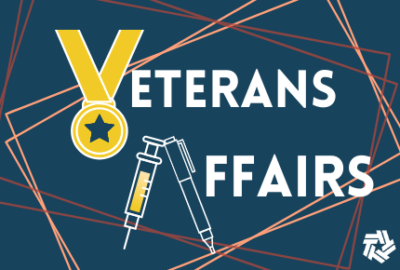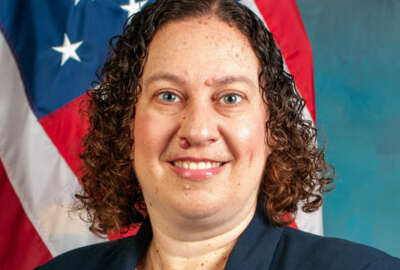Hubbard Radio Washington DC, LLC. All rights reserved. This website is not intended for users located within the European Economic Area.
On Air: Federal News Network
Trending:
GAO takes on auditing the auditing of how SBA handled PPP checks
The Director of GAO’s Financial Markets and Community Investment team, Bill Shear, spoke to Federal Drive with Tom Temin about what it's found so far.
Best listening experience is on Chrome, Firefox or Safari. Subscribe to Federal Drive’s daily audio interviews on Apple Podcasts or PodcastOne.
It’s one thing for Congress to give you an extra $700 billion in the middle of a fiscal year. It’s something else to be told “get rid of it as fast as possible.” That in a nut shell is what the Small Business Administration did earlier this year in the now-famous Paycheck Protection Program and Economic Injury Disaster Loans. The Government Accountability Office was handed the job of auditing the auditing of SBA. The Director of GAO’s Financial Markets and Community Investment team, Bill Shear, spoke to Federal Drive with Tom Temin about what it’s found so far.
Interview transcript:
Tom Temin: Mr. Shear, good to have you back.
Bill Shear: Good morning, Tom.
Tom Temin: So you’ve testified recently on a couple of reports that GAO has done in September and earlier, I guess, in July, on this program. What is the big picture? Do we know about how well and how free of fraud or otherwise abuse of the funds, SBA handled these two giant programs?
Bill Shear: Let me start with the larger of these two very large programs — Paycheck Protection Program, or PPP, as it’s called. That was really stood up very quickly. And in a rush to set it up, SBA was focused on really getting the loans out and work to streamline the program. So lenders were permitted to rely on self certification for eligibility, and there was significant risk that it could be fraudulent or inflated applications that were approved. There was a great reliance and self certification on a part of the borrowers. So in our first report, on the CARES Act, June 25, we made a recommendation that SBA really had to implement internal controls, because upfront in the application process, there were limited controls, and we thought controls had to be in place. It’s to deal with fraud risk, it’s also to do with just generally what we call improper payments. And just the integrity of the program, was the program serving its purpose? So I’ll start there with PPP.
Tom Temin: Yeah, well, there were millions of loans that were given. So I wonder if it’s possible to ever be able to audit each one of them individually or can they only take a sample? And I mean, there’s been some prosecutions, there’s been some evidence of fraud. But is it possible with the controls in place at this point in time, now, we’re getting almost to the end of the calendar year, to ever determine the efficacy of the whole program?
Bill Shear: There are certainly steps that can be taken and should be taken. So among those, and what we refer to very much in this statement used for the recent hearing, is that we have a fraud risk framework which calls for certain things that sometimes I call data analytics to use kind of an academic term for it. But the idea is that you look for inconsistencies among data, you’d look for certain signs that raise flags. And so you are trying to identify certain schemes that might be out there that could create problems like this at a simple level. There’s been talk about have there been duplicate loans, meaning that one business might get more than one PPP loan, and things of that nature, there’s certain types of data analytics that are pretty straight-forward you can do to look at that question. So data analytics become part of it, you look for certain patterns in terms of do you have IP addresses that are from overseas, things of that nature. So there’s things you can do to try to narrow down what might be the loans that are things that really look more closely, then you start getting into the sampling of certain loans to see what a deeper dive would result. So you’re right, you can’t audit every loan. So basically, that’s among the ways you can narrow it down and come up with an approach to evaluate the fraud risk. And for that matter, to evaluate the risk, just that the program might not be serving its intended purposes that short of fraud, you could have certain borrowers maybe don’t quite fit the profile of maybe what was envisioned for this program.
Tom Temin: In other words, it’s not too late then to go back and go over this program in much more detail, and possibly recover funds that went out wrongly, even at this date.
Bill Shear: Exactly. So one of the things that we were very accepting about what happened at the application process, because of the need to get out funds very quickly. But then what we said is once the funds are out, and certainly June 25, many funds were already out, is that you can institute a process of internal controls. And you even have what’s called this loan forgiveness process, which is basically where the loan becomes a grant. So you have borrowers that are now starting to apply for forgiveness. So even in the forgiveness process, you can start looking and make sure that you’re not providing what’s really these grants where SBA does give full forgiveness for the loan, that you can do it through that mechanism. So at least you’re making sure there’s not improper payments that are going to borrowers in terms of this very generous program that again basically converts to a grant.
Tom Temin: Then there’s the other program, the Economic Injury Disaster Loans, and you found similar findings, the need for internal controls reliance on self certification — and there have been some fraud cases that have been brought to the Justice Department. So where does that all stand in terms of what they can still do?
Bill Shear: With the Economic Injury Disaster Loan program, it was modeled off of SBA, other disaster loan programs, which rather than relying on banks, their direct loan programs. And SBA had a lot of technological challenges early on. It just had a lot of challenges getting the loans out, and basically had to come up with new technologies we use of contractors to process loans. So it was a process to get out loans very quickly, that it relied heavily on self certifications by borrowers. So it raises many of the same issues that are present for that PPP program.
Tom Temin: And the SBA wasn’t entirely endorsing the findings from GAO to date — has it?
Bill Shear: No, it hasn’t. It took issue with both us and the SBA’s Office of Inspector General for not giving enough credit for the oversight. For example, they stated that they told us about all of the oversight they had in place to basically audit loans that were over $2 million. So the largest loans in the PPP program, and for at least a sample of loans, less than $2 million. But they didn’t provide details. Let me state it in a conversational way, which doesn’t show up exactly in the written product, which is basically when we asked them to update us on the oversight and place that SBA and Treasury had worked out. They said, well, they would have to give us a supplemental briefing at some point. But that supplemental briefing hasn’t occurred. So just at a conversational level, we haven’t had that conversation with SBA. But I’d say more importantly, is that we as an agency look for documented evidence, as far as what actions have been put in place to create a control environment. So basically, we were told the following things, a contractor will review all loans using an automated review tool, and conduct additional manual reviews of some loans based on risk detected by that tool. The contractor also won’t view the borrower’s economic necessity certification. So it tends to be that it’s these very high level things that would occur, we’d haven’t been provided the details of that. And then going to the next step of actually asking for the contracts with the contractors that are conducting these reviews, just to get an idea as far as one of those contractors is being hired to do. We haven’t gotten the contracts yet. So we remain very concerned, because with the absence of documented evidence, we just aren’t going to accept what’s basically an assertion that controls are in place. And that holds for both programs.
Tom Temin: So basically, when it comes to oversight and audit, we’re just getting underway aren’t we here?
Bill Shear: Yes, we do have loan level data for PPP. And we’re analyzing that. But we’re waiting to receive more documented evidence of how the forgiveness process is going to be managed, about what these contractors are doing in terms of auditing and reviewing loan decisions made of looking at forgiveness decisions made by lenders and SBA’s review of that. So we’re waiting for all of that. So the idea is that we’re really early in the process. We’re not as far along in that we haven’t been provided either loan level or what we often call application level data for the EIDL program. So we’re very early in the process that way and we’re trying to push things along. And we’re doing our best to try to push things along, in particular, with respect to obtaining information from SBA,
Tom Temin: Bill Shear is director of the Financial Markets and Community Investment team at the Government Accountability Office. Thanks so much.
Bill Shear: Thank you, Tom. It’s been a pleasure.
Copyright © 2024 Federal News Network. All rights reserved. This website is not intended for users located within the European Economic Area.
Tom Temin
Tom Temin is host of the Federal Drive and has been providing insight on federal technology and management issues for more than 30 years.
Follow @tteminWFED
Related Stories
Amelia Brust/Federal News Network

GAO delivers a tough review of the VA’s Community Care Program
Related Stories
-
GAO says these agencies didn’t follow employee reassignment rules Agency Oversight
-
GAO delivers a tough review of the VA’s Community Care Program Federal Newscast



